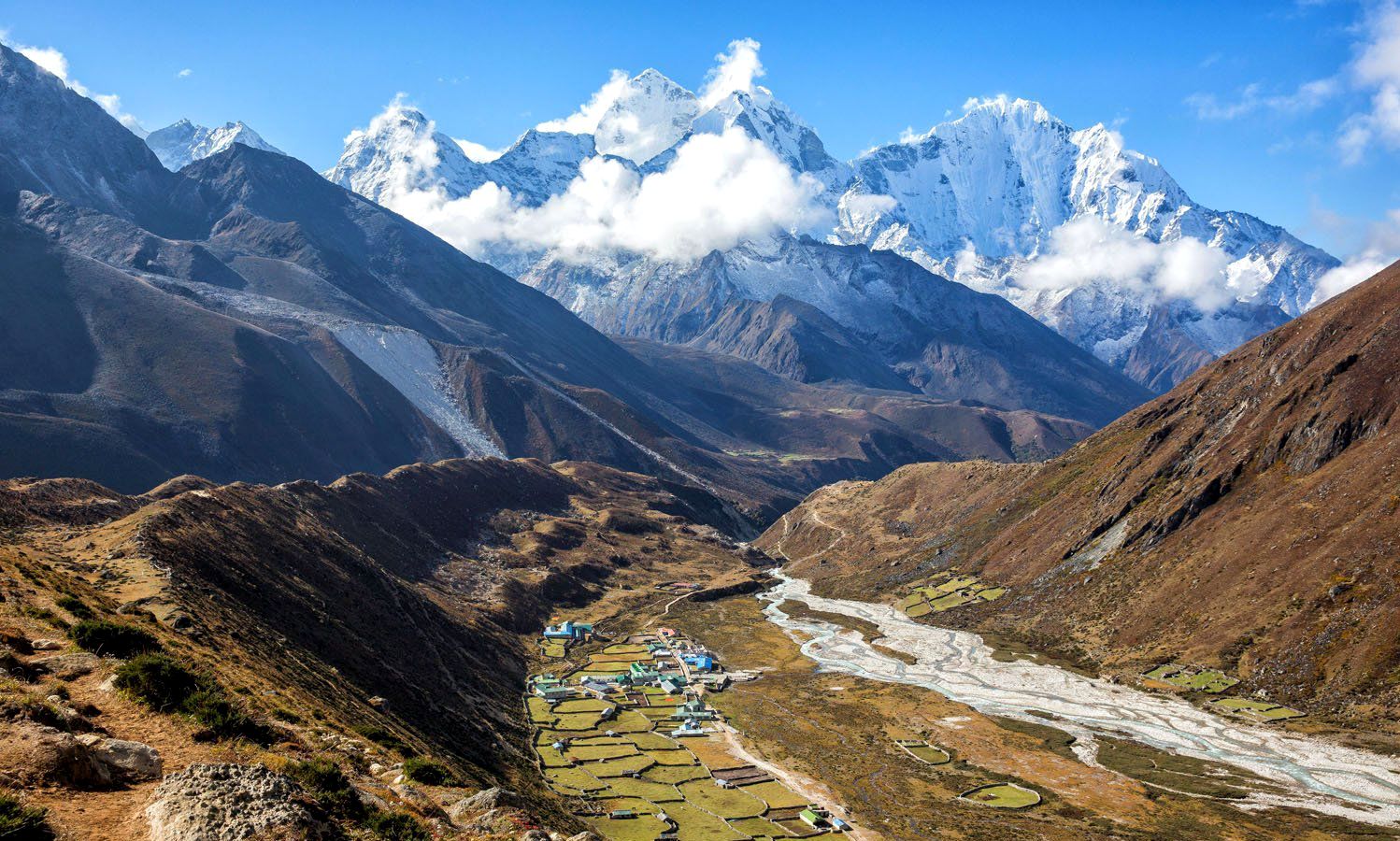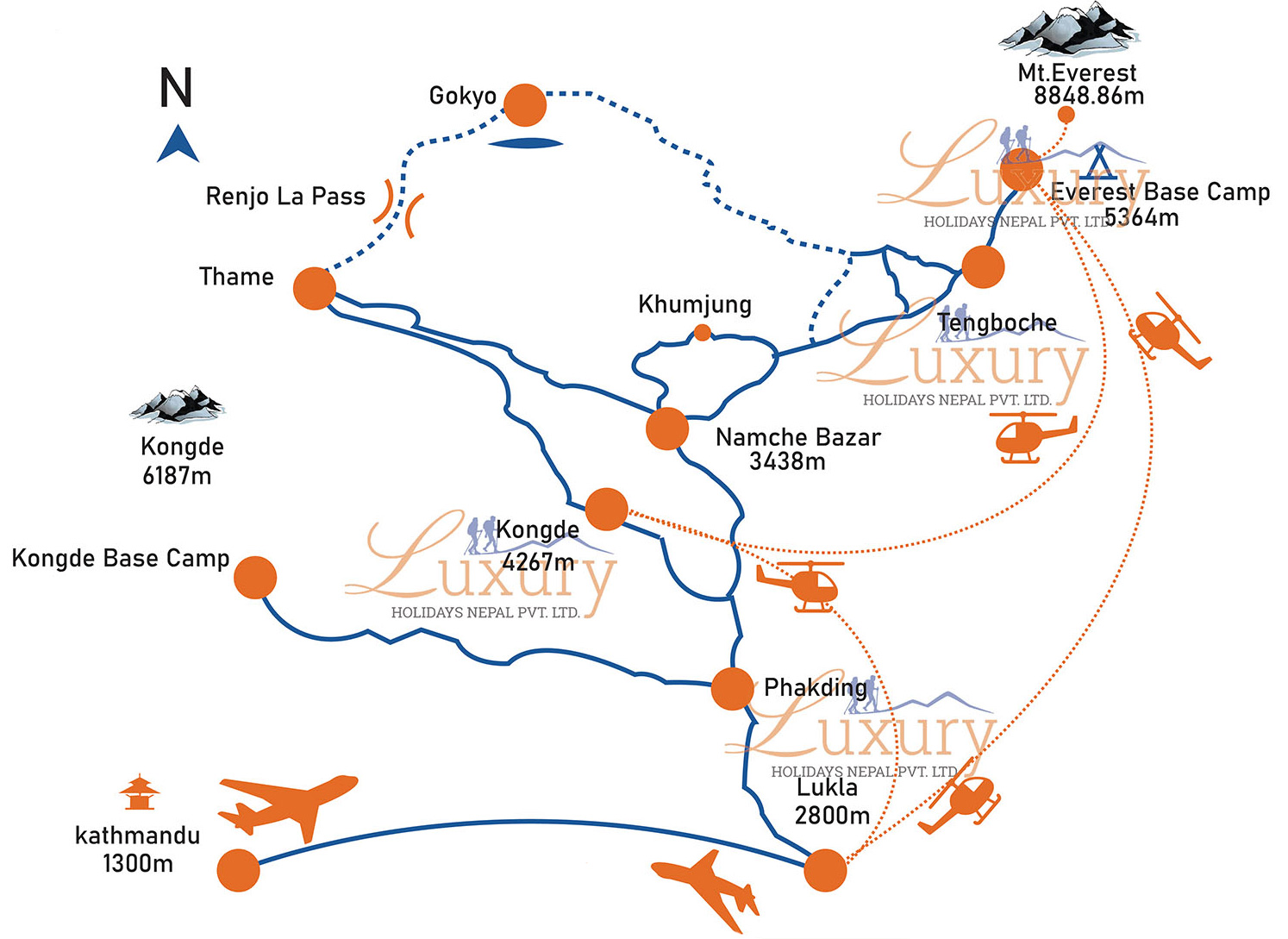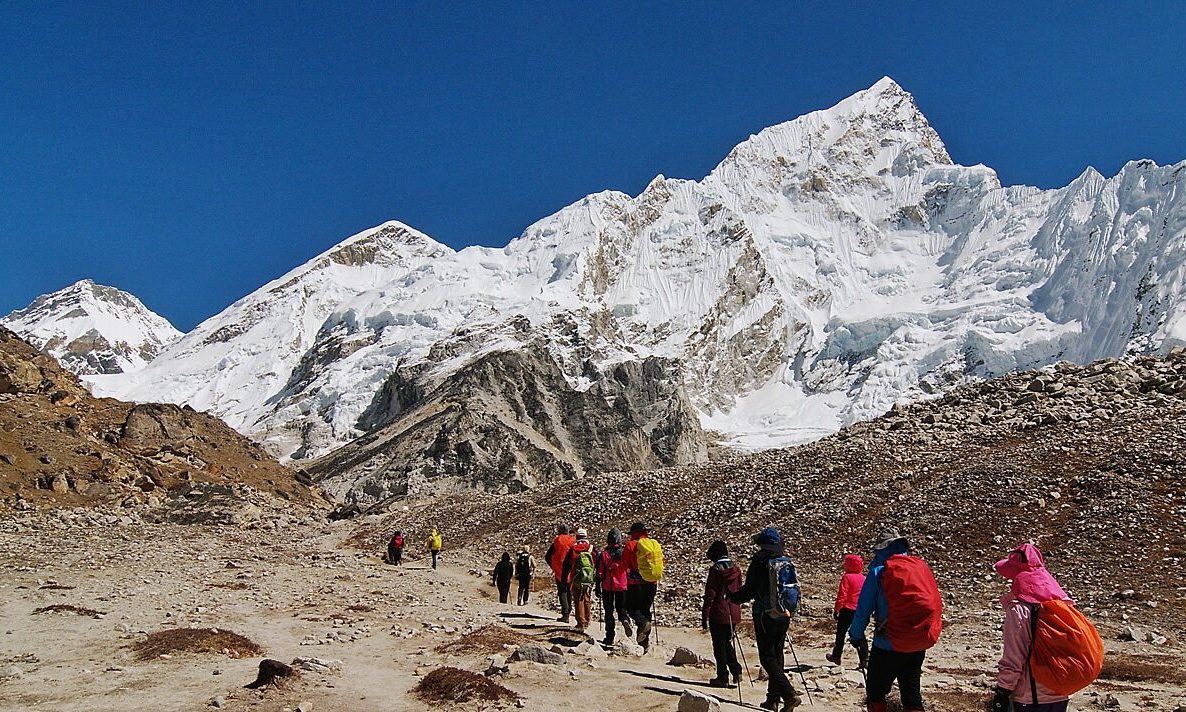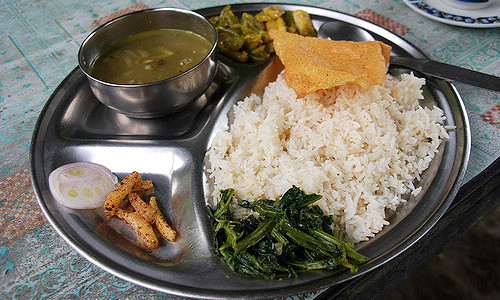- Selecting the Right Local Tour Operator
- Pack Wisely & Minimize Excess Weight
- Prepare Yourself Physically and Mentally
- Aware of the Altitude Sickness
- Prioritize Acclimatization
- Slow and Steady Pace
- A balanced Diet is Necessary
- Stay Hydrated
- Plan a few extra days while trekking in the Everest Region
- FAQs: 10 Tips for a Successful Trek to the Everest Region
Trekking in the Everest Region is more than just an adventure; it's a dream for many wanderlust-driven explorers. Set against the backdrop of the world's tallest peak, Mount Everest, and surrounded by the mesmerizing beauty of the Himalayas, this trek is an experience of a lifetime. The journey, however, is not just about scenic landscapes; it's deeply intertwined with the rich Sherpa culture and the challenges that come with high-altitude trekking. As you prepare to embark on the iconic Everest Base Camp Trek, it's crucial to gear up both mentally and physically. Having the right trekking gear, partnering with a reputable local agency, crafting the ideal itinerary, and seeking expert guidance are key components for a successful trek.

Whether you're aiming to conquer the Everest Base Camp or other renowned treks like those in the Annapurna Region, Langtang Region, or Manaslu Region, these top 10 essential tips will serve as your compass, guiding you through the challenges and ensure a memorable journey in the majestic Everest region.
To ensure your journey is as remarkable and smooth as the landscapes you'll traverse, here are 10 indispensable tips for a successful trek:
Selecting the Right Local Tour Operator
The Himalayas, with their towering peaks and serene landscapes, attract countless travel enthusiasts every year. But while the destination remains unchanged, the experience can greatly differ depending on the tour operator you choose. Amidst a sea of travel and tour operators catering to the Himalayan treks, it's a reality that not all deliver a professional and tailored experience. Therefore, one of the most crucial steps in ensuring a memorable journey is selecting the right tour operator.
Before making a commitment, dive deep into the operator's online presence. Scrutinize their website, delve into client reviews, and examine their work history. Past travelers' feedback can be invaluable, providing insights into the operator's reliability, professionalism, and ability to customize trips.
In essence, a well-researched decision on your tour operator not only paves the way for a seamless journey but also empowers you to realize your Himalayan dream in the best possible way.
Choose a Suitable Itinerary According to Your Needs
The allure of witnessing the majestic Mount Everest draws numerous trekkers to embark on the Everest Base Camp journey. However, while the idea of 'just another trek' may seem tempting, it's essential to understand that this journey is far from a casual hike. The physical demands coupled with the challenges posed by high altitudes make it a unique experience.
Starting your trek from Lukla at 2,840m and culminating at a staggering 5,550m, the drastic altitude change can catch many off-guard. One of the most common and potentially dangerous challenges trekkers face is altitude sickness. To combat this, it's paramount to choose an itinerary that factors in ample time for acclimatization. This not only gives your body the time to adjust to the decreasing oxygen levels but also enhances your overall trekking experience.
A thoughtfully planned itinerary also ensures that you have sufficient rest days interspersed with the trekking days. This balance greatly increases your chances of successfully reaching the base camp and returning without any health issues.
While the excitement of reaching the base camp is understandable, it's essential to prioritize your health and well-being. And choosing a suitable itinerary tailored to your needs is the first step in that direction.

Pack Wisely & Minimize Excess Weight
Trekking in the Everest Region demands both preparation and prudence, especially when it comes to packing. A common pitfall many trekkers encounter is over-packing, often burdening themselves with non-essential items. It's crucial to remember that every extra ounce in your backpack can feel like pounds as you ascend the Himalayan trails. To optimize your trekking experience, streamline your packing list. Focus on essentials like appropriate clothes, vital trekking gear, sustenance, and indispensable equipment. By judiciously choosing what to bring, you not only reduce the strain on your shoulders but also ensure a smoother, more enjoyable trek.
Prepare Yourself Physically and Mentally
Embarking on an expedition to Everest Base Camp is as much a test of the mind as it is of the body. Mental resilience is paramount. You must be steadfast in your determination, holding onto the belief that you can surmount every challenge the trek presents, even when the journey seems insurmountable. This mental fortitude will be your guiding force when fatigue sets in or when the altitude becomes daunting.
Concurrently, physical readiness cannot be understated. The demanding nature of the trek requires a strong foundation of endurance and stamina. Prior conditioning, which involves regular exercise and altitude training, can make a significant difference. Having the physical capability to navigate the high-altitude terrains ensures not just safety but also enhances the overall trekking experience. When both mind and body are in harmony, your trek to the Everest Base Camp becomes a journey of triumph and unparalleled memories.
Aware of the Altitude Sickness
Trekking in the lofty terrains of the Himalayas brings its own set of challenges, one of the primary concerns being altitude sickness. It's vital for every trekker to be informed and vigilant about the symptoms and risks associated with it. Acute Mountain Sickness (AMS) is often the first indication, affecting many who venture rapidly into higher elevations. However, more severe forms like HAPE (High Altitude Pulmonary Edema) and HACE (High Altitude Cerebral Edema) present graver threats, demanding prompt medical attention and evacuation.
The onset of altitude sickness generally occurs when trekkers, unaccustomed to higher altitudes, ascend too swiftly without giving their bodies the time to acclimate. At greater elevations, the air becomes thinner, with lower oxygen levels. Hence, it's paramount to take a measured approach: maintaining a steady pace, incorporating rest days for acclimatization, and ensuring adequate hydration. Adopting these precautions not only reduces the risk of altitude sickness but also ensures a safer and more enjoyable trek toward your Himalayan goal.
Prioritize Acclimatization
Embarking on an ambitious journey like the Everest Base Camp trek is akin to a marathon, not a sprint. Given that the vast majority of us live at sea level or modest elevations, our bodies are unacquainted with the thinner air and reduced oxygen levels found at high altitudes. Therefore, it's essential to let your body gradually adjust to the changing environment to minimize the risk of altitude sickness.
In the Everest region, the acclimatization process typically begins around the 3,500m mark, notably in Namche Bazaar. A subsequent acclimatization phase is at 4,400m, within the confines of Dingboche village. These deliberate pauses are crucial, providing your body with the necessary time to adapt and thus, greatly enhancing your chances of a successful ascent. When mapping out your trek, ensure that your itinerary dedicates sufficient time to these pivotal acclimatization stages.
Slow and Steady Pace
While trekking in the Himalayas and high mountains saving energy is very essential. Your body requires more calories to maintain your body temperature as well. In the beginning days of trekking, you may feel more excitement and most trekkers overuse their energy for walking at a strong pace, moving here and there, and using energy for non-essential purposes. In the beginning days of trekking, there is a lot of excitement among trekkers. Most travelers tend to overuse their energy and walk at a strong pace, draining energy for later days.

Since the treks are days long, you need to conserve your energy and maintain a slow and steady pace, which will help your body and muscles start getting used to it gradually. If you are out of breath you are hiking too fast. So, you must slow your hiking pack while ascending to high altitudes. Make sure that, to keep your energy for a longer time, which is very necessary for more challenging days at higher altitudes.
A balanced Diet is Necessary
For a triumphant journey to Everest Base Camp, the importance of a balanced diet cannot be overstated. Given the physical rigor and challenging conditions of high-altitude trekking, your body demands a consistent supply of energy. Consuming the right nutrients is crucial to meet this demand. A diet rich in high protein, accompanied by ample carbohydrates and essential vitamins, provides the sustenance necessary to navigate the rugged terrains of the Himalayas.
Moreover, beyond just nourishing food, a restful night's sleep plays an integral role in ensuring trekking success. High-altitude adventures can be draining, and adequate sleep helps rejuvenate the body. Therefore, while traversing the towering peaks, it's imperative to prioritize nutrition without skimping on any meal. This will ensure that you are well-fueled and prepared for the challenges the mountains present.

Stay Hydrated
In the challenging terrains of high altitudes, staying hydrated is paramount. Whether you're sipping water or enjoying a warming soup, consuming enough fluids is vital for optimal bodily functions at great elevations. Hydration plays a crucial role in maintaining a balanced oxygen level throughout the body. It ensures that the blood remains thin enough to effectively transport oxygen to all parts of the circulatory system, including the brain.
Neglecting proper hydration can increase the risk of altitude sickness. Hence, it's not just about water; teas, coffees, soups, and lentil broths also count towards your fluid intake. A general recommendation for trekkers at high altitudes is to consume at least 4 liters of fluids daily. This not only aids in combating altitude-related challenges but also ensures you're energized and ready to tackle the mountain trails.
Plan a few extra days while trekking in the Everest Region
When charting out your journey in the Everest Region, it's wise to factor in a few buffer days. The mountain weather, notorious for its fickle nature, often has its own plans. Particularly when flying between Kathmandu and Lukla, you might encounter unexpected hitches. Despite promising weather forecasts, the rapid shifts in visibility and weather conditions in the Everest Region can lead to frequent flight delays or even cancellations.
By planning a few extra days, you not only safeguard yourself from potential logistical headaches but also allow for spontaneous exploration or rest in the beautiful Himalayan landscape. Remember, in the mountains, it's always better to have time on your side.
A successful trek to the Everest Region requires more than just physical preparation; it demands a holistic approach that encompasses acclimatization, guidance, equipment, insurance, nutrition, hydration, cultural sensitivity, timing, communication, and flexibility. By meticulously planning and respecting these ten pillars, trekkers can significantly enhance their experience, ensuring not only a safer journey but also a more enriching and memorable adventure in the heart of the Himalayas. Whether you're crossing off a bucket list item or seeking the thrill of high-altitude trekking, understanding and implementing these tips will pave the way for an unforgettable expedition amidst the world's highest peaks.